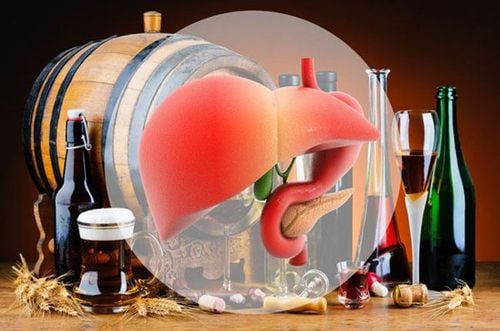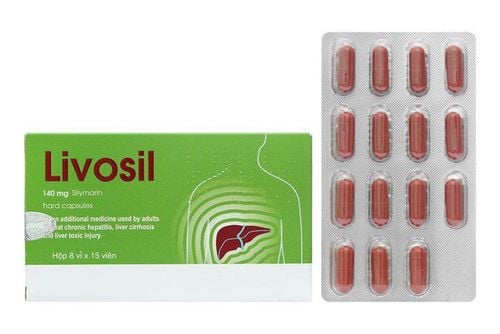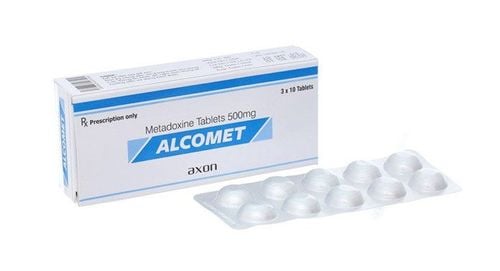This is an automatically translated article.
The article was professionally consulted by MSc Vu Van Quan - Department of General Surgery & Anesthesia - Vinmec Hai Phong International General Hospital.Fatty liver is a condition in which there is an accumulation of fat in the liver that affects the functioning of the liver. Based on the cause, fatty liver is classified into 2 types: alcoholic fatty liver (ALD) and non-alcoholic fatty liver (NAFLD).
1. What is fatty liver disease?
Fatty liver disease occurs when there is an excess of fat accumulated in the liver. Alcohol is the main cause of the disease. Over time, drinking too much alcohol will cause fat to accumulate in the liver cells, impairing the function and functioning of the liver. However, fatty liver can still occur in people who do not drink alcohol or drink in small amounts.
2. Classification of fatty liver disease
2.1 Non-alcoholic fatty liver disease (NAFLD) Non-alcoholic fatty liver means that alcohol is not the cause of the disease. Instead, the disease occurs as a result of metabolic syndrome, an umbrella term for a range of disease symptoms including high blood pressure, high levels of LDL cholesterol, high triglycerides, insulin resistance and large amounts of belly fat and high blood sugar.
NAFLD also exists in different forms:
Simple fatty liver: This means that fat is accumulated in the liver, but does not cause hepatitis and liver cell damage. This form of the disease usually does not cause serious health problems. Most people with nonalcoholic fatty liver disease are diagnosed with simple fatty liver. Non-alcoholic steatohepatitis (NASH): This form of the disease is much more severe than fatty liver alone. When a NASH is diagnosed, there is inflammation in the liver that can also damage liver cells. The inflammation and liver cell damage that occurs with NASH can cause serious problems such as: Fibrosis: Liver scarring Cirrhosis: Severe scarring of the liver, which can lead to liver failure and death Liver cancer Yes about 20% of people with NAFLD have NASH.
2.2 Alcoholic fatty liver disease (ALD) The disease progresses silently, with few symptoms. But if the liver becomes enlarged, it can cause pain or discomfort in the upper right side of the abdomen.
ALD can be markedly improved when the person stops drinking alcohol. Conversely, if the person continues to take it, ALD can cause serious problems, including:
Alcoholic hepatitis: An inflamed, swollen liver that causes fever, nausea, vomiting, abdominal pain, and yellowing. skin (yellow skin and eyes). Alcoholic Cirrhosis: An accumulation of scar tissue in the liver. It can cause symptoms similar to alcoholic hepatitis with other symptoms such as an accumulation of fluid in the abdomen, high blood pressure in the liver, internal bleeding, confusion, and behavioral changes. , splenomegaly, liver failure can be fatal. For people who drink heavily, fatty liver is a common first diagnosis. Then, if the person does not improve the habit, the condition will get worse and turn into alcoholic hepatitis. Over time, it can cause alcoholic cirrhosis.
3. Symptoms of fatty liver disease
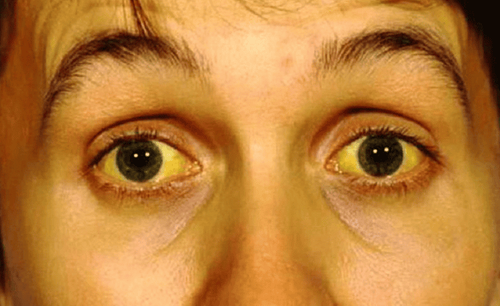
Patients with ALD and NAFLD, often asymptomatic. Some people may have signs of fatigue or pain in the upper right side of the abdomen.
Symptoms commonly seen in patients with NASH or cirrhosis include:
Swollen abdomen Dilated blood vessels under the skin Larger-than-normal breasts in men Red palms Skin and eyes appear yellow, due to the presence of yellowing skin
4. Causes and factors that increase the risk of fatty liver
For ALD, it is caused by drinking too much alcohol. The likelihood of disease is higher for people who drink a lot of alcohol with obesity, malnutrition, chronic viral hepatitis (especially hepatitis C).
For people who don't drink alcohol, genes can be an important factor in determining whether a person has fatty liver disease alone or non-alcoholic steatohepatitis (NASH). In general, the risk of NAFLD or NASH is higher for people who:
Are overweight or obese Not responding to insulin as usual (called insulin resistance) or have type 2 diabetes Have high levels of triglycerides or high bad cholesterol (LDL), or low good cholesterol (HDL) Have metabolic syndrome (which makes you more likely to develop type 2 diabetes and heart disease). There are also some less common reasons for NAFLD or NASH. These include:
Medical conditions that affect how the body uses or stores fat Hepatitis C or other infection Rapid weight loss Taking certain medications such as glucocorticoids, methotrexate (Rheumatrex, Trexall), synthetic estrogens, tamoxifen (Nolvadex, Soltamox), and other medicines Cholecystectomy: Some people who have had their gallbladder removed are more likely to get NAFLD. Treatment of nonalcoholic fatty liver disease requires a combination of many factors, in which lifestyle changes and management of underlying diseases play an important role. Vinmec Hai Phong International General Hospital currently applies the ultrasound-elastic method of liver tissue diagnosis which is the best method to assess damage in the liver parenchyma due to the following diseases: Alcoholic fatty liver, Non-alcoholic liver disease Alcohol, Hepatitis C, Chronic cholestatic liver disease...
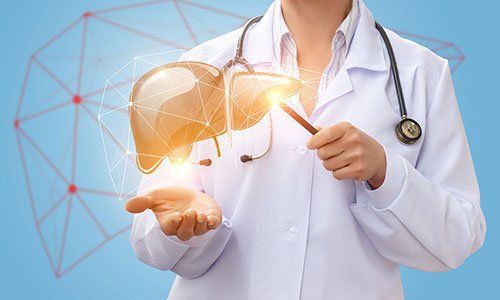
The advantages of the ultrasound-elastic technique of liver tissue at Vinmec Hai Phong include:
The powerful and flexible LOGIQE 9 ultrasound system meets a wide range of general examination needs. With advanced, intuitive capabilities, the LOGIQ E9 allows you to use professional tools to get great images and make your exam easier. New technology using Shear Wave: Qualitative and quantitative measurement of elastic energy of parenchyma Through color coding table and values of elastic levels in pressure units Kpa. The Shear Wave parenchymal elastography tool allows the user to actively localize the survey right on the ultrasound image. Images acquired during the survey can be easily marked and tracked. Team of highly qualified doctors: Doctor Doan Xuan Sinh; Dr. Nguyen Dinh Hung ; Doctor Pham Quoc Thanh Master. Doctor. Vu Van Quan has more than 10 years of experience working in the field of General Gastroenterology, specializing in examining and treating surgical pathologies of the gastrointestinal tract, liver, bile, pancreas and diseases of the abdominal peritoneum and abdominal wall.
Please dial HOTLINE for more information or register for an appointment HERE. Download MyVinmec app to make appointments faster and to manage your bookings easily.







